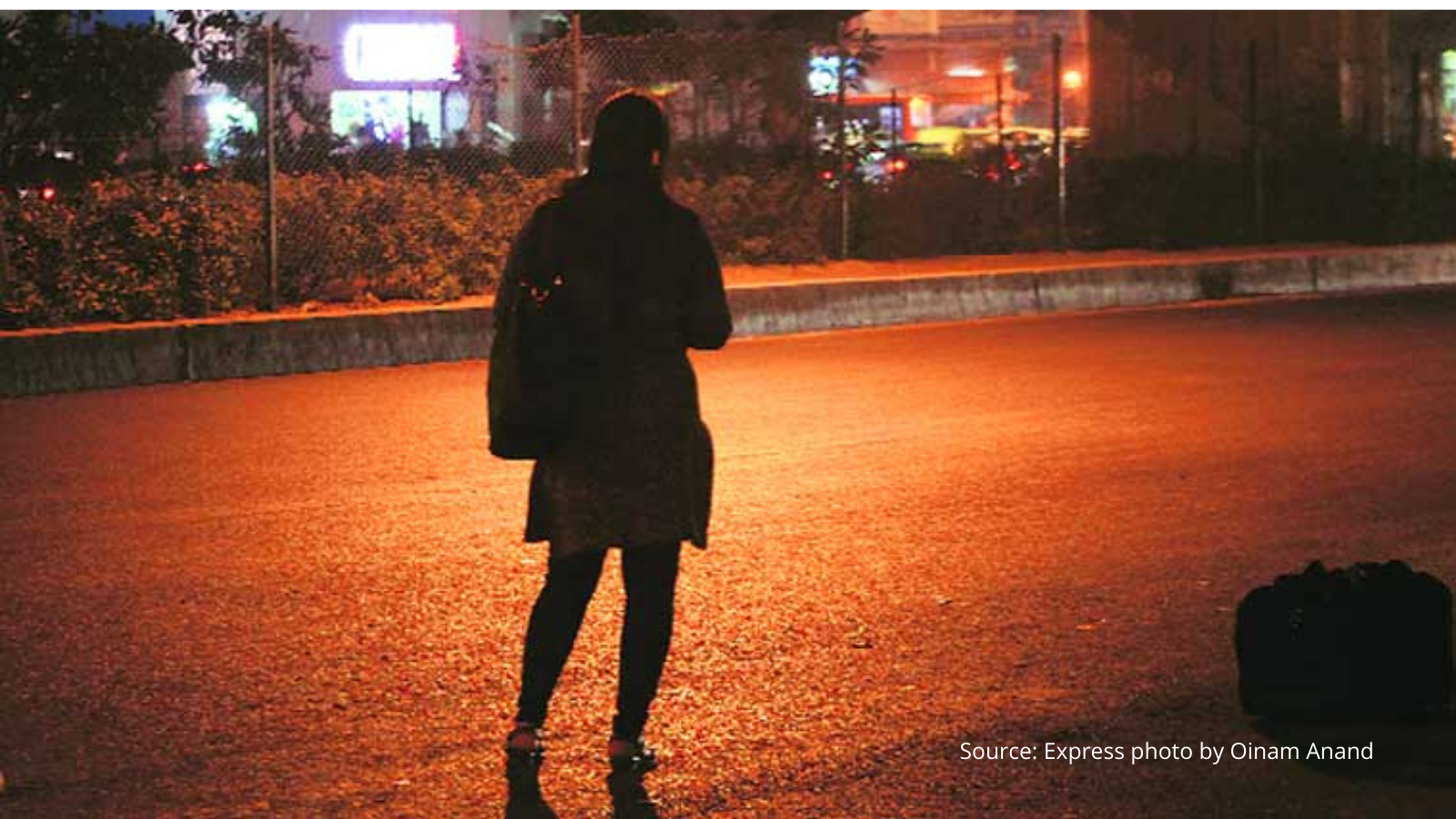
25 Feb Will the night-shift policy alone give a boost to female employment?
According to Census 2011, there are 149.8 million women workers, out of which 121.8 million are in rural areas and 28 million in urban areas. Based on the 2019 Periodic Labour Force Survey (PLFS) report the labour force participation rate[1] of women (for 15 years and above)[2] has witnessed a steep decline from 22% in 2017-18 to 23.3% in 2018-19. In terms of the urban and rural divide, the workforce participation rate of urban women is lower than those of their rural counterparts.
One of the profound impacts of COVID-19 has been its disproportionate impact on the employment of women. The pandemic has only exacerbated the situation with widespread unemployment across multiple sectors and sharpened the existing gender divide in the workforce. Data from CMIE’s Consumer Pyramids Household Survey shows that female labour force participation in urban India plunge to 7.2 % in October and further to 6.9% in November compared to 71% for men.
In an attempt to increase women’s workforce participation, the Finance Minister in her budget speech announced that women will be allowed to work in night shifts across all sectors, with adequate safety. While this move is a welcoming and well-appreciated one as it will incentivize and empower more women to join the labour force, there are other factors that also need to be addressed ensure women are able to step out to work. Among them, safety and safe mobility are very important ones.
A slew of proposals to encourage women’s economic participation has been concentrated around improving education, workplace conditions, wages, and access to capital and networks. But women’s ability to access education, job opportunities and networks is limited by their daily mobility among other factors. The impacts of this are significant yet largely unmeasured and unstated in the sector. Lack of safety in public places and transport on their way to and from home, limit women’s economic engagement. They alter their travel patterns to circumvent danger with consequences for their participation in work and education life.
Over the last six years, Safetipin has been conducting safety audits in over 40 cities in India and outside to make cities and public spaces safer and more inclusive for women. The public places are assessed on eight parameters – lighting, openness, visibility, security, walkpath, public transport, people and gender usage. Finally, we also look at safety perception based on these. Based on our recent audited data from four cities – Delhi, Hyderabad, Kolkata, and Bhopal, we find that infrastructural issues inhibit the movement of women within cities. For instance, areas with poor lighting (or lack thereof) along the roads are generally avoided by women due to the fear of being sexually harassed on the streets. In addition to lighting, low visibility due to high boundary walls acts as a major barrier to women’s mobility. Based on our 2019 data, 51% of the audited areas in Delhi, 51% in Kolkata, and 65% in Bhopal score poorly due to low visibility and the absence of hawkers on the streets. Street vendors act as eyes on the street and provide natural surveillance, establishing a sense of safety for the citizens. We also find that 78%, 51%, 77% of the audited areas in Delhi, Bhopal, Hyderabad respectively have a low presence of women and children. This type of data collection and analysis aid in making evidence-backed decisions to address citizens’ concerns and experiences in using public places.
To reap the benefits of this positive move, our government needs to invest in urban policy solutions, improve public infrastructure to ensure safety and mobility in public spaces. Female commuter safety should be central to the designing and planning of public transport, stations, waiting areas, and not just an afterthought. In terms of security, further efforts are needed to expand the provision of infrastructure beyond an effective surveillance system, such as street lighting, to ensure women don’t face sexual harassment when travelling to work. According to the Women and Mobility study conducted by Safetipin and The Asia Foundation in Bhopal, Gwalior and Jodhpur, 50% of sexual harassment cases against women in cities took place while using public transport and 16% while waiting for public transport.
In cities like Delhi and Gurgaon, although many options for public transport are available, the absence of last-mile connectivity persist, especially when travelling at night. Most metro and bus stations become isolated post 10 pm and with inadequate lighting, women find it unsafe to walk long distances to reach home. Introducing buses with increased frequency to reduce overcrowding, deploying marshals at sensitive bus stops and metro stations, and fostering presence of hawkers to provide natural surveillance and establish a sense of safety for the citizens, are some suggestions to strengthen last-mile connectivity.
Moreover, employers should nurture an environment where women benefit from working in a risk-free environment. Measures should be adopted by employers to ensure the safety of women employees who work at night shifts by providing affordable and safe transportation facility from the residence to workplace and back, adequate security guards outside the workplace during the night shift, among other things.
Public transport is a public good and the accessibility of a safe and reliable transport network is the key to people using it. It is high time that policymakers realize the significance of integrating a gender lens in public infrastructure and urban policies for women to be able to fully participate in the workforce.
[1] India’s female labour force participation rate is calculated as the share of working age (16-64 years) women who report either being employed or are seeking work).
[2] Age 15 is the cut-off used for global comparisons by the International Labour Organization.

